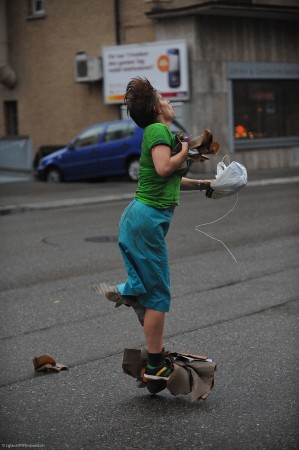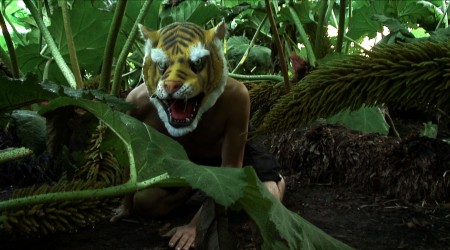From August 20-27th dancer and choreographer, Olive Bieringa of BodyCartography Project will be facilitating a week-long collaborative classroom (in the Walker’s FlatPak House and at off-site locations), teaming up with a collective of scientists and artists to co-investigate the scientific and physical ways we interact with and understand the environment. The ecosomatics classroom is a roving experimental project that intertwines the fields of ecology, biology and other sciences along with dance and the somatic practice of Body-Mind Centering. For the full schedule click here. Olive was kind enough to elaborate on the big ideas behind this project:
What is ecosomatics?
First let’s begin with the word somatics which comes from the Greek word soma meaning “the living body in its wholeness.” Thomas Hanna coined the term “somatics” in 1976 to describe the practices that directly address mind/body integration e.g. Body-Mind Centering, Feldenkrais, Alexander technique, etc.
Ecosomatics is an emerging interdisciplinary field which connects embodiment practices such as dance and the healing arts with ecological consciousness. It is a dynamic approach to learning and living and a manifestation in how the moving arts can facilitate a lasting positive impact upon the natural, and the social landscape.
Where did the idea for this project originate?
For over a decade I have been creating site specific performance work in all kinds of social and physical landscapes which has stimulated my environmental awareness. Through the study of Body-Mind Centering® I have been exposed to the practice of embodying anatomical and physiological information and this has deeply informed my art making. I had an appetite to extend my interdisciplinary research to other fields of science. How can we can access knowledge from other disciplines to enrich our own? How can embodiment/movement play a role in how we accumulate knowledge? How can our somatic knowledge expand research in other fields? How can embodied and empathetic practices help us to evolve as human beings and transform our environmental consciousness?

Who are your team of collaborators, and what role will they play in the Ecosomatics Classroom?
I will be joined by four scientists John Schade, Ecosystem Ecologist St. Olaf College, Biology and Environmental Studies, Bonnie Ploger, Behavioral Ecologist, Department of Biology & Artist in Residence, Center for Global Environmental Education, Hamline University Environmental Education, Ben Jordan, Biologist, Harvard University and Bryce Beverlin II, Biophysicist working with the brain and neural networks, University of Minnesota Physics Department. They will offer other short lectures and participate in activities and exchanges throughout the week.
How does this project fit into your work as a dancer?
I consider myself an artist who works with the body as my primary site. I make performance work, installations and alternate learning environments such as SEEDS (somatic experiments in earth, dance + science), an annual festival of arts and ecology and an ecosomatics classroom. This project is a prototype for me. I will facilitate the week. It is an experiment in interdisciplinary education in which anybody can contribute to the subject at hand.

What is your definition of the commons?
My definition of the commons includes our shared resources both natural and cultural, of course that includes our embodied knowledge. We each live in a body, a free resource. Together we have a shared experience of being conceived, growing from an embryo to a fetus, being born, living, breathing and shitting on this earth. How can we tap into this living knowledge that exists in our tissue to help us regain our sense of wholeness and relationship with the world in which live.
What do you mean by ‘rewilding the commons’?
Together we will play, overcoming our domestication to engage in our human wildness. Using our animal instinctiveness we will discover other ways of perceiving and interacting with the commons/world.
What’s your vision for an alternate classroom model?
With this classroom project I am interested in how knowledge can be gained, embodied, exchanged and given away for free.
What are your most pressing ecological concerns?
Water, earth, air, nuclear waste, social inequities, food quality, war, the bees…our bodies and those of other animals, insects and plants are direct mirrors of environmental health. Things are at a crisis point.
How do you hope movement and dance will help you and your participants gain a better understanding of the environment?
Through real and metaphorical connections, expanding our ability to empathize and take action.
What can we expect to see and do in Open Field on August 26th at theRewilding the Commons program?
For people who come for the whole day we will look at perceptual systems of other animals. We will build a movement score that everyone can participate in. A herd of animal-humans that will roam the field pursuing wild and serene group actions and random solo adventures.

How can the public get involved?
People are invited to attend any day of the ecosomatics classroom. They can also come to participate in either of the performances: Rewilding the Commons or GO on Nicollet Avenue. They should check out the ecosomatics blog to see the schedule and email me if they have questions.

